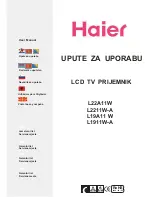
Materials Declarations
7
Materials Declarations
7.1
Overview
Ericsson products are designed and manufactured in keeping with good
environmental practice. Our component and materials selection policy prohibits the
use of a range of potentially hazardous materials. In addition, we comply with
relevant environmental legislation.
7.2
For the European Union
For product sold into the EU after 1
st
July 2006, we comply with the EU RoHS
Directive. We also comply with the WEEE Directive.
7.3
For China
For product sold into China after 1st March 2007, we comply with the “Administrative
Measure on the Control of Pollution by Electronic Information Products”. In the first
stage of this legislation, content of six hazardous materials has to be declared
together with a statement of the “Environmentally Friendly Use Period (EFUP)”: the
time the product can be used in normal service life without leaking the hazardous
materials. Ericsson expects the normal use environment to be in an equipment room
at controlled temperatures (around 22°C) with moderate humidity (around 60%) and
clean air, near sea level, not subject to vibration or shock.
Where Ericsson product contains potentially hazardous materials, this is indicated
on the product by the appropriate symbol containing the EFUP. For Ericsson
products, the hazardous material content is limited to lead (Pb) in some solders.
This is extremely stable in normal use and the EFUP is taken as 50 years, by
comparison with the EFUP given for Digital Exchange/Switching Platform in
equipment in Appendix A of “General Rule of Environment-Friendly Use Period of
Electronic Information Products”. This is indicated by the product marking:
It is assumed that while the product is in normal use, any batteries associated with
real-time clocks or battery-backed RAM will be replaced at the regular intervals.
The EFUP relates only to the environmental impact of the product in normal use, it
does not imply that the product will continue to be supported for 50 years.
EN/LZT 790 0009 R1A
2011-03-30
41 (44)




































